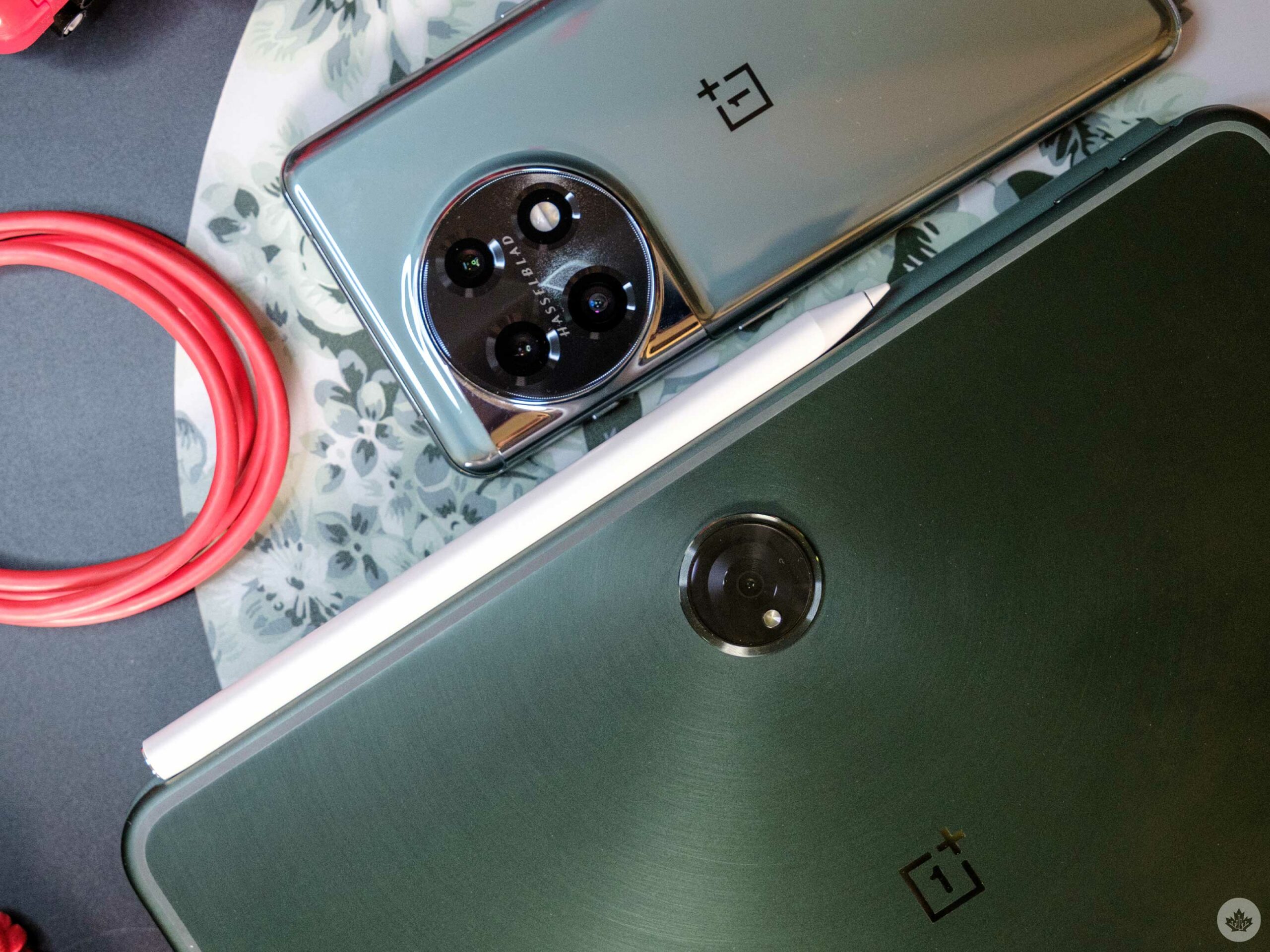Reviewing tablets is always challenging.
People use them in various ways, and it’s difficult to gauge what’s worth it, what’s a fair price and if you should even buy one. Everyone needs a laptop, but for many, tablets are non-essential accessories. So figuring out where the OnePlus Pad fits in all this has been a struggle.
OnePlus isn’t one to be left behind, and with the threat of a Pixel tablet looming, the Shenzhen-based company decided to cross the tablet line first. However, as we saw with the launch of the OnePlus Watch a few years ago, it’s not always best to be first.
Undoubtedly, OnePlus fans will be excited to see a tablet of this calibre from the company. But for everyone else, it might be a tough sell without a compelling ecosystem and mature tablet software.
11.6-inch LCD 2800 x 2000 pixel resolution
10.9-inch IPS Liquid Retina display, 1640 x 2360 pixel resolution
6.7-inch LTPO3 Fluid AMOLED 120Hz refresh rate
12-megapixel (f/1.8 wide)
50-megapixel (f/1.8, 24mm, OIS) + 32-megapixel (f/2.0, 48mm, telephoto), 48-megapixel (f/2.2, 115°)
12-megapixel (f/2.4, ultrawide)
16-megapixel (f/2.5, 25mm)
Wifi 6, 5G, Bluetooth 5.3
GSM/CDMA/HSPA/EVDO/LTE/5G
Accelerometer, gyro, compass, color spectrum
Fingerprint (top-mounted), accelerometer, gyro, compass, barometer
Fingerprint (under display, optical), accelerometer, gyro, proximity, compass, color spectrum
Colours: Silver, Blue, Pink, Yellow
Colour: Titan Black, Eternal Green
11.6-inch LCD 2800 x 2000 pixel resolution
10.9-inch IPS Liquid Retina display, 1640 x 2360 pixel resolution
6.7-inch LTPO3 Fluid AMOLED 120Hz refresh rate
12-megapixel (f/1.8 wide)
50-megapixel (f/1.8, 24mm, OIS) + 32-megapixel (f/2.0, 48mm, telephoto), 48-megapixel (f/2.2, 115°)
12-megapixel (f/2.4, ultrawide)
16-megapixel (f/2.5, 25mm)
Wifi 6, 5G, Bluetooth 5.3
GSM/CDMA/HSPA/EVDO/LTE/5G
Accelerometer, gyro, compass, color spectrum
Fingerprint (top-mounted), accelerometer, gyro, compass, barometer
Fingerprint (under display, optical), accelerometer, gyro, proximity, compass, color spectrum
Colours: Silver, Blue, Pink, Yellow
Colour: Titan Black, Eternal Green
The design is all that
The best part about the OnePlus Pad is its hardware. The speakers are room-filling and clear. They surprised me when I started using the tablet and easily compete with similarly priced iPads. When you push them up above 60 percent, they blast music, and the Atmos tuning provides immersive sound when it’s in front of you. The best compliment I can give is that typically, I connect music in my office to a Sonos, but with the tablet, I just let it play from the device and was more than satisfied.
The screen compliments the speakers and makes watching movies a treat. It’s a variable 144Hz panel, so it modulates from 144Hz – 30Hz depending on what you’re doing. Gaming uses higher refresh rates, while just typing a document uses a lower refresh rate. The colours are nice too, but I found the default ‘Vivid’ option to be a bit too punchy, and all the other options have very subdued whites. I ended up selecting the ‘Real’ option. It’s not a perfect mix, but after a day, I got used to it and felt better using the OnePlus Pad, knowing that it’s recreating colours more faithfully, especially for creative work like photo editing.

The tablet’s rear is a soft brushed metal that feels smooth and comfortable. The pleasing brushed pattern radiates from the camera nicely, even if its finish picks up fingerprints. Overall, it feels quite high-end and stands up nicely against the new iPad.
The awkwardly large camera is centred when you hold it in landscape mode, but if you flip it into portrait orientation, there’s a strong chance you’ll touch it. I appreciated the 5:7 display when typing this review on the OnePlus Pad. It makes it feel more like an iPad when it’s in your hand compared to a Samsung Galaxy Tab, and I appreciate the ample room for getting work done.

Along the tablet’s edge are clicky volume controls and space to magnetically attach the OnePlus Stylo, the company’s stylus. It’s not included in the box and is similar to the 2nd-Gen Apple Pencil. There are several magnets along the top, so you can incorrectly attach the pen easily. However, once you get it on there, the magnets are strong, and the tablet charges the Stylo.
In true OnePlus fashion, the tablet has excellent battery life and can even fast charge using 67-watt chargers in an hour and twenty minutes. To build on this, the company also promised a month of standby time, and while I couldn’t leave it sitting for a month, I was often pleasantly surprised to pick it up after a day or two to see that there was still plenty of juice left.
The OnePlus tablet difference

Since this is OnePlus’ first tablet, a lot of new tech is packed into it to make Android run better on a large screen and compete with other established tablets.
For example, there needed to be a stylus, and the Stylo fills that gap nicely. It functions well with minimal lag, but the glassy surface of the OnePlus pad combined with the plastic tip of the Stylo; the glide is too much for my liking. You can work precisely with it, but for the price of the tablet, I would be shocked if artists decided to grab this over an iPad, which has more apps and accessories, such as paper-like screen protectors.

For writers, OnePlus is selling a new keyboard case, and I like it a lot. For a tablet keyboard, it has sufficient key travel, decent space and a nice tactile typing sound. There’s even a tiny trackpad. The cursor adapts to suit text documents or emulate a finger press. It would be nice to have dedicated function keys, but I’m walking away from this review impressed with this little keyboard. That said, there is an annoying button next to the Alt key that looks like it will open the multitasking menu, but instead, it opens Google Assistant. Overall, I found the tablet adopts some Windows shortcuts, with Alt-Tab being the shortcut for multi-tasking.
The software has a few new multitasking options for split screen and floating windows. If you squeeze on an open window with four fingers, it will shrink to roughly the size of a phone app, but unfortunately, it doesn’t swap into the phone app’s layout. For example, when you shrink down Spotify, the skip forwards and back controls disappear. Apps that are just blown-up versions of their phone counterparts, like Twitter, shrink nicely, but it’s a game of hit-and-miss.

You can also trigger two apps to work side-by-side in the typical Android multitasking menu, which I used much more often than pinning smaller resizable windows. You can also begin a side-by-side session by swiping down from the top of the tablet with two fingers. To push it a bit further, there is a mode that allows you to run two instances of the same app beside each other, but in my testing, the only app I could find to support it is Adobe Acrobat.
There’s also a new feature called Pad Connect that I couldn’t test since my OnePlus 11 and OnePlus 10 Pro can’t update to OxygenOS 13.1 to take advantage of it. In the reviewer’s guide, it looks like a piece of software that forwards notifications from your phone to your tablet, similar to the app Pushbullet. It can also cloud copy/paste and cloud passwords from your phone, as long as the devices are nearby. It’s a useful feature and one I use across Macs and iPhones, so I’m excited to see it come here. Like the Apple version, this appears to be locked to OnePlus devices.
Similar to many other tablets, OnePlus opted to show some recent apps in the taskbar, but unlike Apple and Samsung, you can only access it from the home screen. There are a lot of half-baked features like this. They’re relatively inconsequential, but combined, it shows the immaturity of OxygenOS on tablets. For instance, there’s no system search, and when you’re using the tablet keyboard/trackpad, you can’t go back to the home screen without touching the screen. You can click on the gesture bar on iPad to go home. Adding to this, there’s still the brutal OnePlus shelf from its phones, but it’s not resized and is super laggy whenever you accidentally open it. Weirdly, it also becomes visible on the multitasking screen too.
On top of that, widgets are all mismatched sizes, and if you get them to fit in one orientation, the next time you flip your tablet 90-degrees messes them up. My Screen Time widget even inexplicitly resized itself when I had the keyboard attached.

